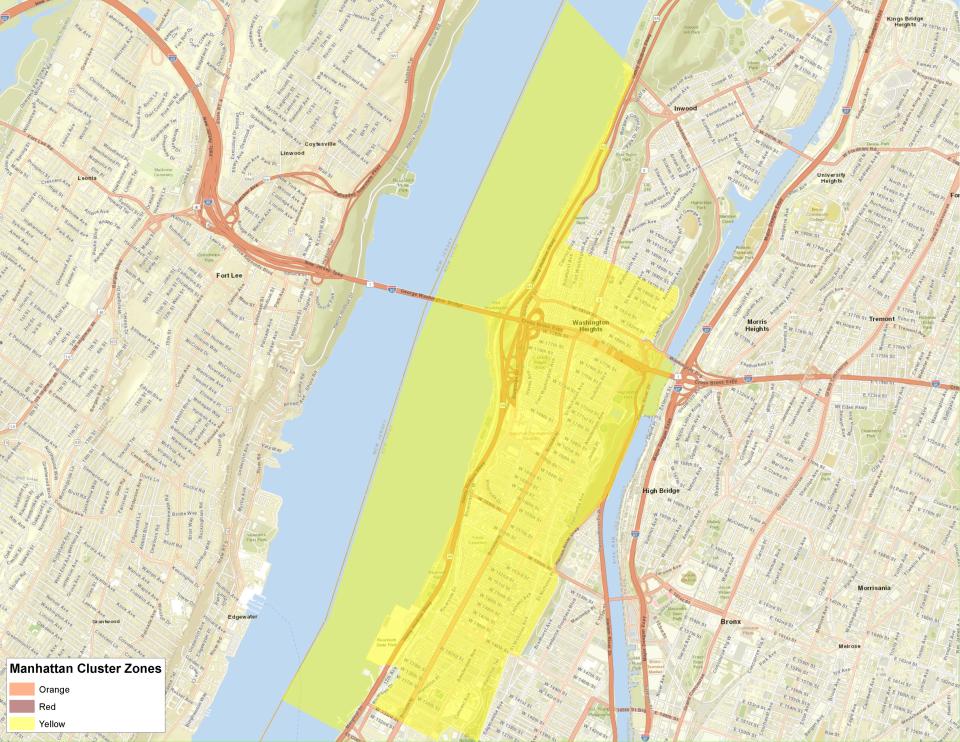Part Of Harlem Becomes 'Yellow Zone' As Coronavirus Cases Rise
HARLEM, NY — Gov. Andrew Cuomo on Monday designated much of Upper Manhattan, including parts of Harlem, as a micro-cluster "yellow zone," imposing some new restrictions on businesses and gatherings amid a continued uptick in coronavirus cases.
The yellow zone stretches from 133rd to 187th streets between the Hudson River and East River to the north, before narrowing along St. Nicholas Avenue further south. That includes the Hamilton Heights and Sugar Hill areas of Harlem, as well as most of Washington Heights.
"Upper Manhattan is going to become a yellow zone. Basically, the Washington Heights area is 3.3," Cuomo told reporters Monday, referring to the percentage of coronavirus tests that came back positive in the past week within that zone.
No major changes will come with the new designation. Under the state's guidance for yellow zones, indoor and outdoor dining is limited to four people per table, houses of worship are restricted to 50 percent capacity, and non-residential gatherings are limited to 25 people.

"This should serve as a stark warning to people uptown that cases are rising steadily," City Councilmember Mark Levine, whose district includes much of the new yellow zone, told Patch Monday.
Yellow zones, which do not affect schools or force businesses to close, are the least restrictive of the state's neighborhood-level micro-cluster strategy. Under the strictest zone, red, all nonessential gatherings are banned, schools and nonessential businesses must close, dining must switch to takeout and delivery only.
Levine said the yellow zone would likely take effect Tuesday.
BREAKING: @NYGovCuomo announces covid "yellow zone" in Upper Manhattan.
Covers zip codes 10031, 10032, 10033.
Means:
* No gatherings indoors/outdoors over 25
* Dining indoors/outdoors no more than 4 per table
* Houses of worship at 50% capacity
Likely takes effect tomorrow.
— Mark D. Levine (@MarkLevineNYC) November 23, 2020
"While a yellow zone does not bring with it major restrictions, it should warn people that major restrictions will happen soon unless we flatten this curve," Levine said. "That should particularly impact people’s decisions on Thanksgiving, which there’s a lot of indications of family gatherings planned."
The Upper Manhattan yellow zone is the only one in the borough so far. Other micro-clusters have already been designated in the Bronx, Brooklyn, Queens and Staten Island.
According to the state's metrics, an area becomes a yellow zone when its coronavirus positivity rate stays above 2.5 percent for 10 days, and when an average of 10 or more cases are confirmed per 100,000 residents, based on the 7-day rolling average.
Cuomo warned last week that all of New York City could soon fall under an orange zone, halting indoor dining and closing some nonessential businesses, if cases continued to rise.
This article originally appeared on the Harlem Patch

